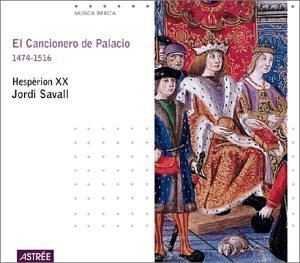 | ||
Similar Cancionero de Upsala, Cancionero de Baena, Llibre Vermell de Montserrat, Cantigas de Santa Maria, Laberinto de Fortuna | ||
Rodrigo martinez villancico from cancionero de palacio
The Cancionero de Palacio (Madrid, Biblioteca Real, MS II–1335), or Cancionero Musical de Palacio (CMP), also known as Cancionero de Barbieri, is a Spanish manuscript of Renaissance music. The works in it were compiled during a time span of around 40 years, from the mid-1470s until the beginning of the 16th century, approximately coinciding with the reign of the Catholic Monarchs.
Contents
- Rodrigo martinez villancico from cancionero de palacio
- Jan u janto cancionero de palacio the early music consort of london david munrow
- The manuscript
- Works
- Complete list of works
- References
Jan u janto cancionero de palacio the early music consort of london david munrow
The manuscript
The first ten folios are not numbered; the remaining folios are numbered from 1 to 304. Based on the index of works included in the beginning of the manuscript, it originally had 548 works. Many folios have been lost, reducing the number of works currently in the manuscript to 458.
The manuscript was written by 9 different people and in all received 11 successive additions:
By the end of the 19th century the manuscript was found in the Royal Library of the Royal Palace of Madrid by composer and musicologist Francisco Asenjo Barbieri, who transcribed and published it in 1890 with the title "Cancionero musical de los siglos XV y XVI" (Musical songbook of the 15th and 16th centuries).
Works
The manuscript contains 458 works, the bulk of which are in Castilian, although a few works also appear in Latin, French, Catalan and Portuguese. It constitutes an anthology of the polyphonic music performed during the reign of the Catholic Monarchs.
The themes found in the songs are the most varied: romantic, religious, festive, chivalrous, satirical, pastoral, burlesque, political, historical, etc. accompanied by music of all styles: from popular folk songs to elaborate compositions. The musical form most important is the villancico, though other genres are also found as the romance and the canción. The majority of the works are for one voice with instrumental accompaniment but polyphonic works are also available for 2, 3 or 4 voices.
Below is a list of the composers present in the manuscript, with the number of works in parentheses:
Complete list of works
Three different indexing systems are used in the table below:
